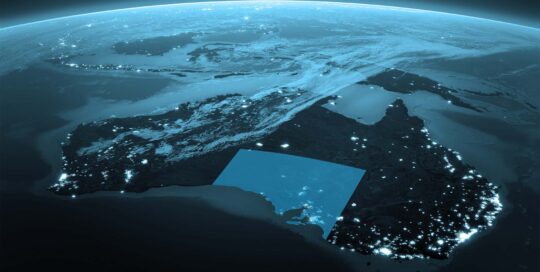The time is right for our state to take full advantage of new opportunities in the space sector, writes SA Space Industry Centre space director Darin Lovett.
What an extraordinary 18 months it has been. Our planet has been ravaged by cataclysmic bushfires, a global pandemic continues unchecked, and the long-term impact on society and our children is still being meted out.
Some 2000 years ago Seneca wrote “disaster is virtue’s opportunity”. Today, in a new era of space development and disruption, the disasters above have provided new opportunities for space solutions being developed in South Australia. Space services such as remote earth observation and global communications are now being applied in innovative ways to solve pressing terrestrial problems of pandemic tracking and water management. Virtue’s opportunity is being met with a remarkable comeback from SA’s space ecosystem.
Some 50 years ago, Australia’s first satellite was launched from the outback desert rocket range at Woomera, cementing South Australia’s place in space history. But the energy and excitement of Australia’s space foray was left to founder for half a century; today, it is making way for a new approach that will cement South Australia’s place in a new generation of space development – we call it NewSpace.
Now is a pivotal moment to be engaged in the space sector in Australia, particularly in the vibrant space ecosystem emerging in South Australia. Comparatively, when I left school, no such industry existed here. My career aspiration was to become involved in the aerospace industry – to build, and ultimately fly, flying things. Unfortunately, at that time such a career generally meant leaving Adelaide for education and employment.
Today, the very reason I left Adelaide has brought me back – to help build an enduring space industry for South Australia.
Traditional space related services support our way of life on Earth in many ways. These services comprise Position Navigation and Timing (think of GPS), communications, and Earth observation (weather and imagery) – and are mainly delivered by large traditional space companies. However, a new market has emerged offering phenomenal opportunities to new entrants who are unencumbered by legacy practice.
These NewSpace enabled products and services have strong potential to improve the productivity and competitiveness of virtually every sector of the broader economy, as well as making a direct contribution to growth. NewSpace means closer orbits to Earth (only 500km above our heads), smaller satellites (weighing tens of kilograms as opposed to thousands), and new technology that is opening up new possibilities for space developments and creating jobs for aspiring space workers in South Australia.
The Australian Civil Space Strategy outlines a plan to grow the Australian space economy from $4 billion and 10,000 jobs in 2018, to $12 billion and 30,000 jobs by 2030. For South Australia, we are receiving a significant portion of a $2 billion capital space investment over 10 years, remarkable growth in our emerging space companies of 10 times over the last five years, an average wage of $98,000, and a direct value add to the economy of $140m in 2020 – all expected to increase at 5.8 per cent annually for the next 10 years, well above the average state growth.
Today, the capabilities of South Australia’s space sector spans small satellite design and manufacture, launch operations, mission control and ground stations, and data analysis and processing.
South Australia is building on this and is establishing a vibrant space ecosystem comprising academics, manufacturers, lawyers, business, policy, government, launch providers and testers to qualify equipment for the rigours of the space environment.
Sourced from: ‘Space & Creative Industries, Future Industries Jobs of Today’, Sunday Mail, 1 August 2021.





